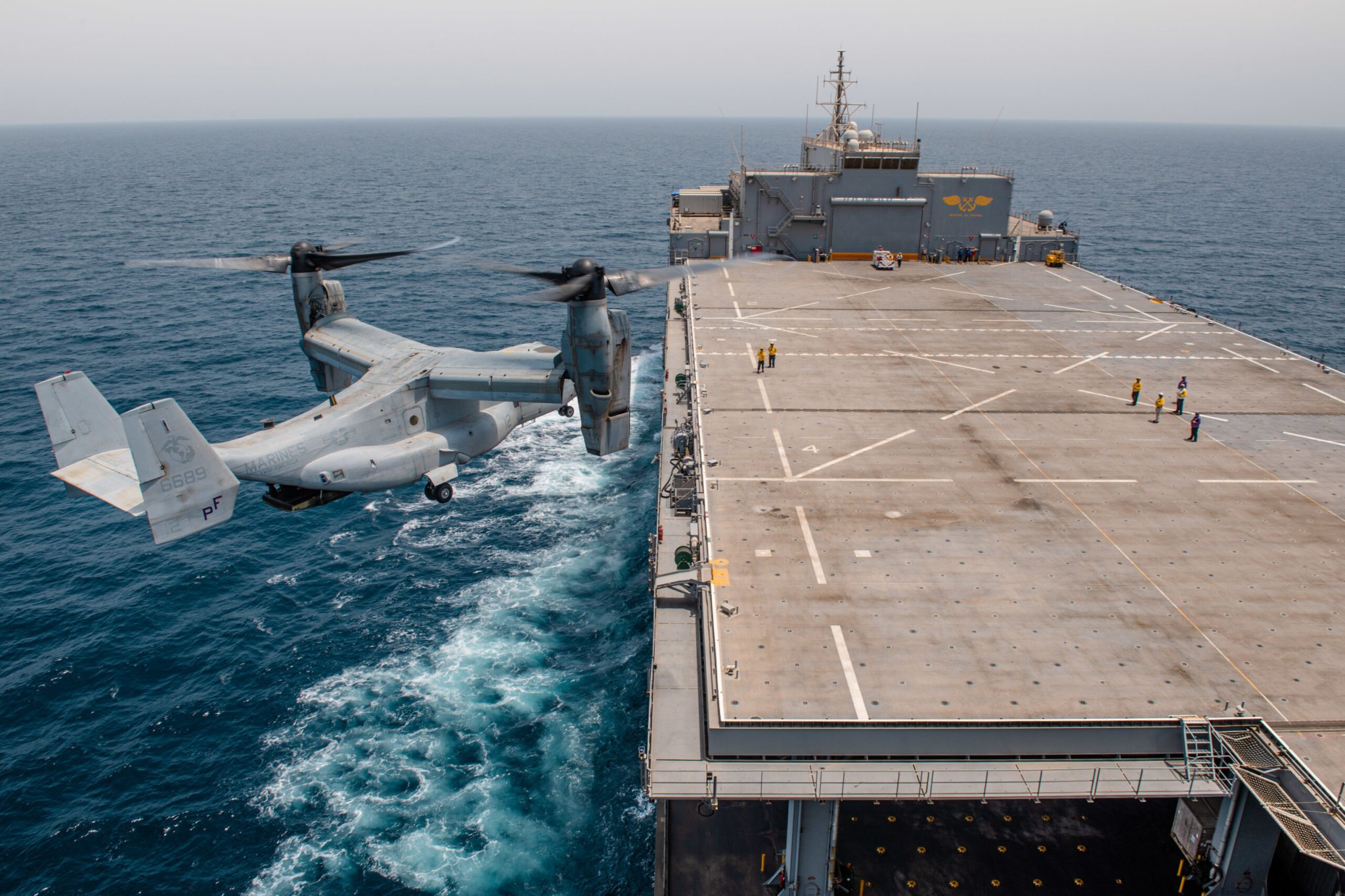

The U.S. Navy plans on “bolstering” its presence in the Strait of Hormuz in response to recent incidents involving transport ships in the busy commercial shipping route.
The move comes after Iran [seized] two tankers in the strait in late April and early May. In a statement on the decision, the Navy said that Iran “has harassed, attacked or interfered with the navigational rights of 15 internationally flagged merchant vessels over the past two years” although it did not specify which incidents it was citing.
“Iran’s unwarranted, irresponsible and unlawful seizure and harassment of merchant vessels must stop,” Vice Adm. Brad Cooper, commander of U.S. Naval Forces Central Command, U.S. 5th Fleet and Combined Maritime Forces, said in a statement. “U.S. 5th Fleet and our partners are committed to protecting navigational rights in these critical waters.”
Subscribe to Task & Purpose Today. Get the latest military news, entertainment, and gear in your inbox daily.
It’s not clear how the U.S. presence in the strait will increase, or what military assets will be moved to accommodate this new posture. Currently the 5th Fleet, based in Bahrain, maintains a large force in the waters around the Middle East. The Strait of Hormuz runs between the Persian Gulf and the Gulf of Oman is a major route for vessels coming in and out of the area.
Naval elements from Iran’s military and the Islamic Revolutionary Guard Corps seized two tankers, on April 28 and May 3, respectively. Reuters has reported that the April seizure was done in response to the United States intercepting an Iranian ship a few days prior. The report cited maritime security agency Ambrey, which issued a warning to customers about potential danger, saying “Iran has previously responded tit-for-tat following seizures of Iranian oil cargo.”
“We have seen repeated Iranian threats, armed seizures and attacks against commercial shippers who are exercising their navigational rights and freedoms in international waterways,” John Kirby, spokesman for the National Security Council, told reporters this week.
The United States has regularly seized or attempted to seize Iranian oil tankers, a policy meant to enforce sanctions on Iran for its nuclear program. Maritime incidents between the two forces have been common, such as when Iran tried and failed to seize an American naval drone.
The U.S. Navy and Coast Guard have been heavily active in the waters near the Middle East, intercepting weapons, explosive material and drugs moving through the region’s shipping lanes. In many of those incidents the United States have said that they are being sent from Iran, often to the country’s regional allies, such as the Houthi rebels in Yemen. Most recently the U.S. Coast Guard seized approximately $110 million in drugs this week in the Gulf of Oman. The ships involved in the two incidents, the Coast Guard said, originated from an Iranian port.
The latest on Task & Purpose
- Ukraine claims Russian troops and Wagner mercenaries are fighting each other
- Star Wars’ Stormtroopers are a reminder why marksmanship is so important
- Marine veteran killed while evacuating Ukrainian civilians from Bakhmut
- US Army Special Operations Command has its first female senior enlisted leader
- Marine element conducts short-notice air defense deployment to Middle East
